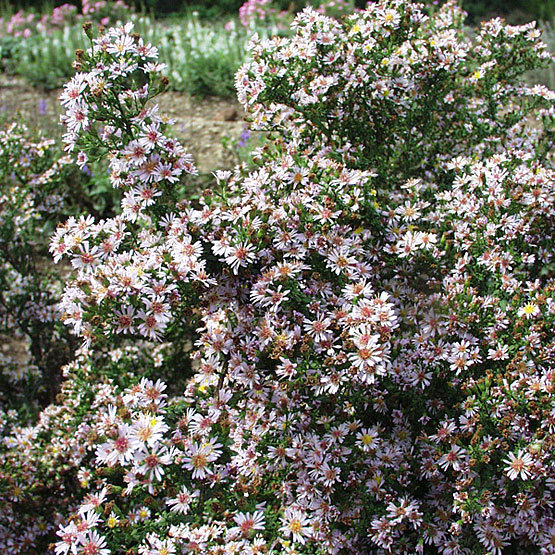
Aster is a large genus of 250 species of annuals, biennials, perennials, and subshrubs from many different kinds of habitats, mainly in North America. The flowers resemble small daisies, with yellow disk florets, and white, pink, blue, or purple ray florets. The leaves are generally alternate, simple, and lance-shaped. There is an aster for most any type of garden, including borders, rock gardens, waterside plantings, dry areas, and wildflower gardens.
Noteworthy CharacteristicsDaisy-like flowers in white or shades of pink, blue, or purple. Many attract butterflies and offer valuable late-season color.
CareGrowth requirements vary among species, but all need either full sun or partial shade. Taller species should be staked in spring and may be cut back by one-half in late spring or early summer. See species reports for specific requirements.
PropagationIn spring or fall, sow seed in a cold frame, or divide or separate runners. Some species may be propagated from basal cuttings as well.
ProblemsVerticillium wilt, gray mold, powdery mildew, rusts, white smut, aster yellows, and many fungal leaf spots and stem cankers are common. Asters are also prone to damage from slugs, snails, aphids, tarsonemid mites, and nematodes.






























